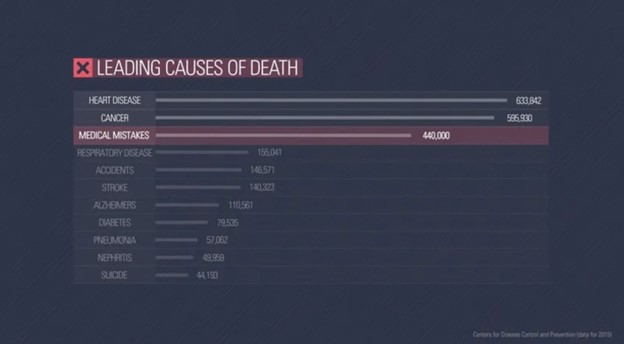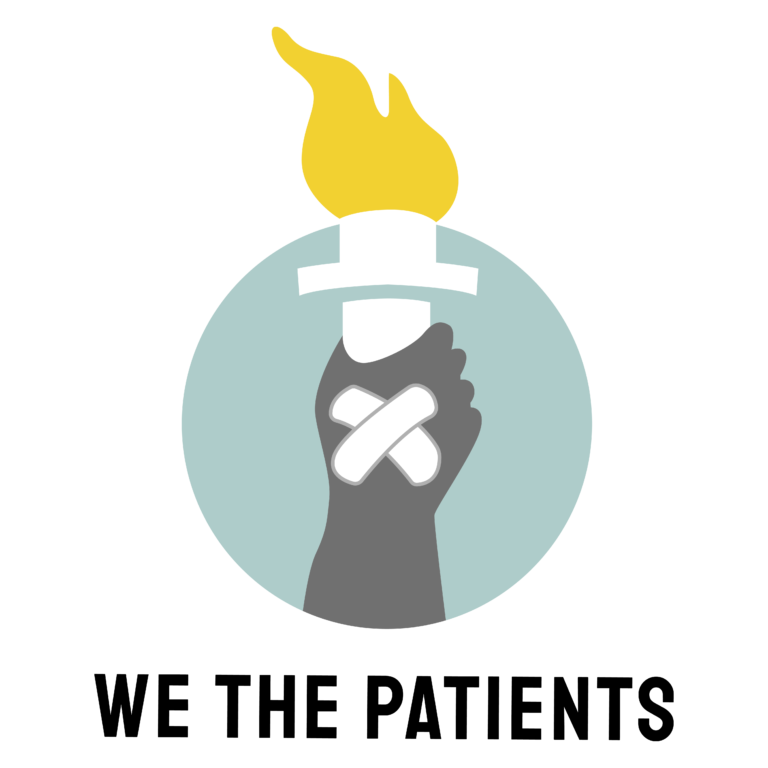Guest Post by Chuck Bell, Programs Director, Advocacy, Consumer Reports
Saturday, September 17 has been designated as World Patient Safety Day by the World Health organization. This year’s theme is Medication Safety, to highlight the importance of avoiding errors and mistakes in prescribing, administering and taking prescription drugs.
Medication harm accounts for 50% of the overall preventable harm in medical care, according to the WHO. $42 billion in global health spending worldwide could be avoided if medication errors are prevented.
Many Americans are shocked when they learn that medical errors are the THIRD LEADING CAUSE of death in the United States. A 2013 article in the Journal of Patient Safety estimated that each year, as many as 1.7 million Americans experience a preventable mistake during medical care, and these mistakes lead to many as 440,000 deaths annually. This is more people than the number of graves inside Arlington Cemetery, and equivalent of number of deaths that would result from 2-3 commercial jets crashing every day.

In the U.S., patient safety emerged as a significant public issue 24 years ago when the Institute of Medicine (IOM) published the landmark report, To Err is Human. The IOM notably estimated that more people die annually from medication errors than from workplace injuries. The report argued that the QUALITY of health care cannot be reliably assured unless better systems are put in place to track and monitor medical mistakes, and assure the SAFETY of care for patients.
Medication errors can happen in any health care setting – a doctor’s office, a pharmacy, a hospital or a nursing home. According to the 2006 report “Preventing Medication Errors” from the Institute of Medicine, these errors injure 1.5 million Americans each year and cost $3.5 billion in lost productivity, wages, and additional medical expenses. Medication errors are especially common in nursing homes and other long-term care facilities, where the wrong doses of medications are frequently administered.
According to American Nurse, medication errors can take place from mistakes in communication between prescribers and pharmacists.
A physician writes an order for primidone (Mysoline) for a 12-year old boy with a seizure disorder. Misreading the physician’s handwriting, the pharmacist mistakenly fills the order with prednisone. For 4 months, the boy receives prednisone along with his seizure medications, causing steroid-induced diabetes. The diabetes goes unrecognized, and he dies from diabetic ketoacidosis.
A high profile medication error came to light in 2014, when actor Dennis Quaid disclosed that his two newborn twins had been inadvertently exposed to 1,000 times the correct dose of the drug Heparin in a Los Angeles hospital.
To reduce the number of medication errors, it is important to ensure the “5 Rights” in the use of prescription drugs. These include making sure that the Right Drug is given to the Right Patient, at the Right Dose, at the Right Time, through the Right Route (e.g. oral or intravenous, etc). This handy formula doesn’t solve all medication safety problems, but it’s an important start.
To learn more about how to protect yourself from medication errors as a patient, read 20 Tips to Help Prevent Medical Errors, a fact sheet prepared by the federal Agency for Health Quality and Research (AHRQ). The tips explain how to protect yourself from possible medication errors, where the wrong drugs and dosages may be prescribed; surgical errors; and hospital infections. The fact sheet is also available in Spanish.
One of the most important patient safety tips overall is to SPEAK UP IF YOU HAVE QUESTIONS. Don’t assume providers always know what they are doing, or haven’t forgotten something important!! Medical care is safer and more effective when patients are active, assertive partners in their own care.
A second important concept is that more care is not always better. Overtreatment – too many tests, drugs or procedures – can also lead to bad outcomes for patients. The Pacific Business Group on Health has estimated that patients only receive evidence-based, appropriate medical care about 55% of the time. The rest of the time, they may receive too little care (undertreatment), too much care (overtreatment) or inappropriate care (preventable medical harm such as hospital infections, medication errors or surgical mistakes).
The AHRQ’s specific tips for preventing medication errors include the following:
What You Can Do To Stay Safe: Medicines
- Make sure that all of your doctors know about every medicine you are taking.
This includes prescription and over-the-counter medicines and dietary supplements, such as vitamins and herbs. - Bring all of your medicines and supplements to your doctor visits.
“Brown bagging” your medicines can help you and your doctor talk about them and find out if there are any problems. It can also help your doctor keep your records up to date and help you get better quality care. - Make sure your doctor knows about any allergies and adverse reactions you have had to medicines.
This can help you to avoid getting a medicine that could harm you. - When your doctor writes a prescription for you, make sure you can read it.
If you cannot read your doctor’s handwriting, your pharmacist might not be able to either. - Ask for information about your medicines in terms you can understand—both when your medicines are prescribed and when you get them:
- What is the medicine for?
- How am I supposed to take it and for how long?
- What side effects are likely? What do I do if they occur?
- Is this medicine safe to take with other medicines or dietary supplements I am taking?
- What food, drink, or activities should I avoid while taking this medicine?
- When you pick up your medicine from the pharmacy, ask: Is this the medicine that my doctor prescribed?
- If you have any questions about the directions on your medicine labels, ask.
Medicine labels can be hard to understand. For example, ask if “four times daily” means taking a dose every 6 hours around the clock or just during regular waking hours. - Ask your pharmacist for the best device to measure your liquid medicine.
For example, many people use household teaspoons, which often do not hold a true teaspoon of liquid. Special devices, like marked syringes, help people measure the right dose. - Ask for written information about the side effects your medicine could cause.
If you know what might happen, you will be better prepared if it does or if something unexpected happens.
Patients who experience a medication error should report it to their providers, pharmacist, New York State Department of Health and FDA Medwatch. The Institute for Safe Medication Practices has a good website with additional resources called ConsumerMedSafety.org
Watch a Movie, Read A Book
To learn more about patient safety, you can watch an excellent film called To Err is Human, which is available from Tubi, Kanopy (a video streaming platform available for free through many public libraries), iTunes, PlutoTV and Amazon Prime Video. Directed by Michael Eisenberg, the son of late patient safety pioneer, Dr. John M. Eisenberg, To Err Is Human is an in-depth documentary about the silent epidemic of preventable medical harm. The film profiles patients, researchers and who are working quietly behind the scenes to advocate for changes in care delivery to promote patient safety, and improve transparency and accountability in medical care.
Watch To Err is Human trailer on Vimeo.
There are also three excellent books you can also read to learn more about patient safety.
- Wall of Silence: The Untold Story of the Medical Mistakes That Kill and Injure Millions of Americans, by Rosemary Gibson and Janardan Prasad Singh
- The Treatment Trap: How the Overuse of Medical Care is Wrecking Your Health and What Can Be Done to Prevent It, by Rosemary Gibson and Janardan Prasad Singh
- Overtreated: Why Too Much Medicine is Making Us Sicker and Poorer by Shannon Brownlee


